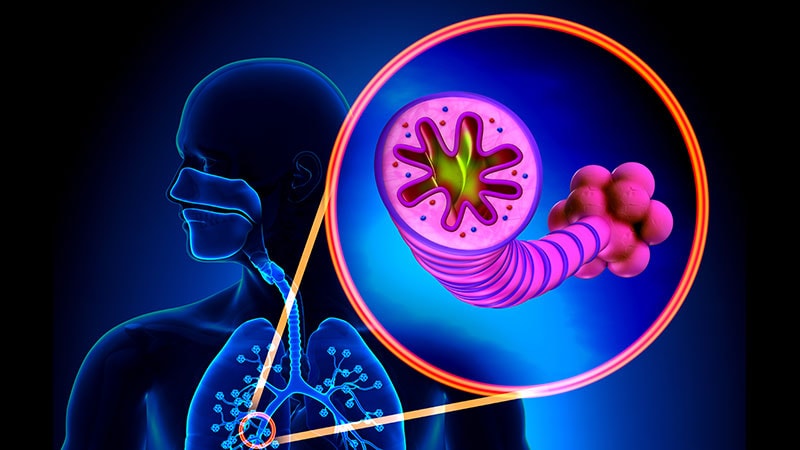核心概念
Dupilumab reduces COPD exacerbations by 30%.
摘要
The study focused on the efficacy of Dupilumab in reducing exacerbations in COPD patients with type 2 inflammation. Key highlights include:
- Dupilumab significantly reduced exacerbations by 30% compared to placebo.
- The BOREAS trial randomized COPD patients to Dupilumab or placebo.
- Primary outcome: annualized rate of COPD exacerbations.
- Secondary outcomes: FEV1 improvement, quality of life measures.
- Safety issues: common adverse events and serious adverse events.
- Dupilumab showed potential in impacting exacerbations and improving quality of life.
- Study limitations included the COVID-19 pandemic and patient stratification.
- A replication study (NOTUS) is underway to further evaluate Dupilumab's efficacy.
客製化摘要
使用 AI 重寫
產生引用格式
翻譯原文
翻譯成其他語言
產生心智圖
從原文內容
前往原文
www.medscape.com
Dupilumab Curbs Acute COPD Exacerbations
統計資料
Dupilumab significantly reduced exacerbations in adults with chronic obstructive pulmonary disease by approximately 30% compared with placebo, based on data from approximately 900 individuals.
The primary outcome was the annualized rate of COPD exacerbations, which was 0.78 in the dupilumab group vs. 1.10 in the placebo group, (rate ratio 0.70, P < .001).
Serious adverse events occurred in 13.6% of dupilumab patients and 15.5% of placebo patients.
引述
"This trial showed that dupilumab has the potential to impact the vicious cycle of exacerbations and lung function decline in patients with uncontrolled COPD with type 2 inflammation." - Researchers
從以下內容提煉的關鍵洞見
by Heidi Splete 於 www.medscape.com 05-22-2023
https://www.medscape.com/viewarticle/992271
深入探究
How might the COVID-19 pandemic have influenced the study results?
The COVID-19 pandemic could have influenced the study results in several ways. Firstly, changes in patient behaviors and exposures during the pandemic may have impacted exacerbation rates, potentially leading to reduced exacerbations in both the treatment and placebo groups. This could have affected the overall interpretation of the efficacy of dupilumab in reducing exacerbations. Additionally, the pandemic may have introduced confounding variables that were not accounted for in the study, potentially affecting the outcomes and conclusions drawn from the research.
What are the potential implications of underrepresentation of Black patients in the study?
The underrepresentation of Black patients in the study has several potential implications. Firstly, it raises concerns about the generalizability of the study findings to diverse populations, as the efficacy and safety of dupilumab in COPD patients from different racial backgrounds may not have been adequately assessed. This lack of representation could also perpetuate disparities in healthcare, as the benefits and risks of the treatment may not be fully understood in Black patients with COPD. Furthermore, the underrepresentation of Black patients highlights the need for more inclusive clinical research practices to ensure that all populations are appropriately represented in studies evaluating new treatments.
How can the findings of this study be applied to other chronic respiratory conditions?
The findings of this study on dupilumab in COPD with type 2 inflammation have implications for other chronic respiratory conditions characterized by similar inflammatory pathways. For conditions such as severe asthma, where type 2 inflammation plays a significant role, dupilumab may also be effective in reducing exacerbations and improving lung function. The success of dupilumab in targeting interleukin-4 and interleukin-13 pathways suggests that it could be beneficial in other diseases driven by type 2 inflammation, such as certain types of bronchiectasis or chronic rhinosinusitis with nasal polyps. By understanding the mechanisms of action of dupilumab in COPD, researchers and clinicians can explore its potential applications in a broader range of chronic respiratory conditions with similar underlying inflammatory processes.
0
